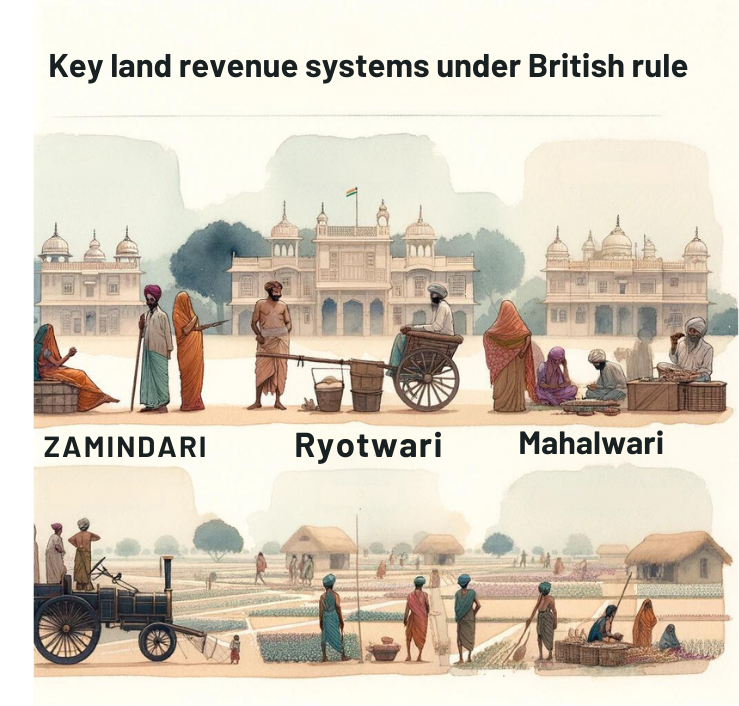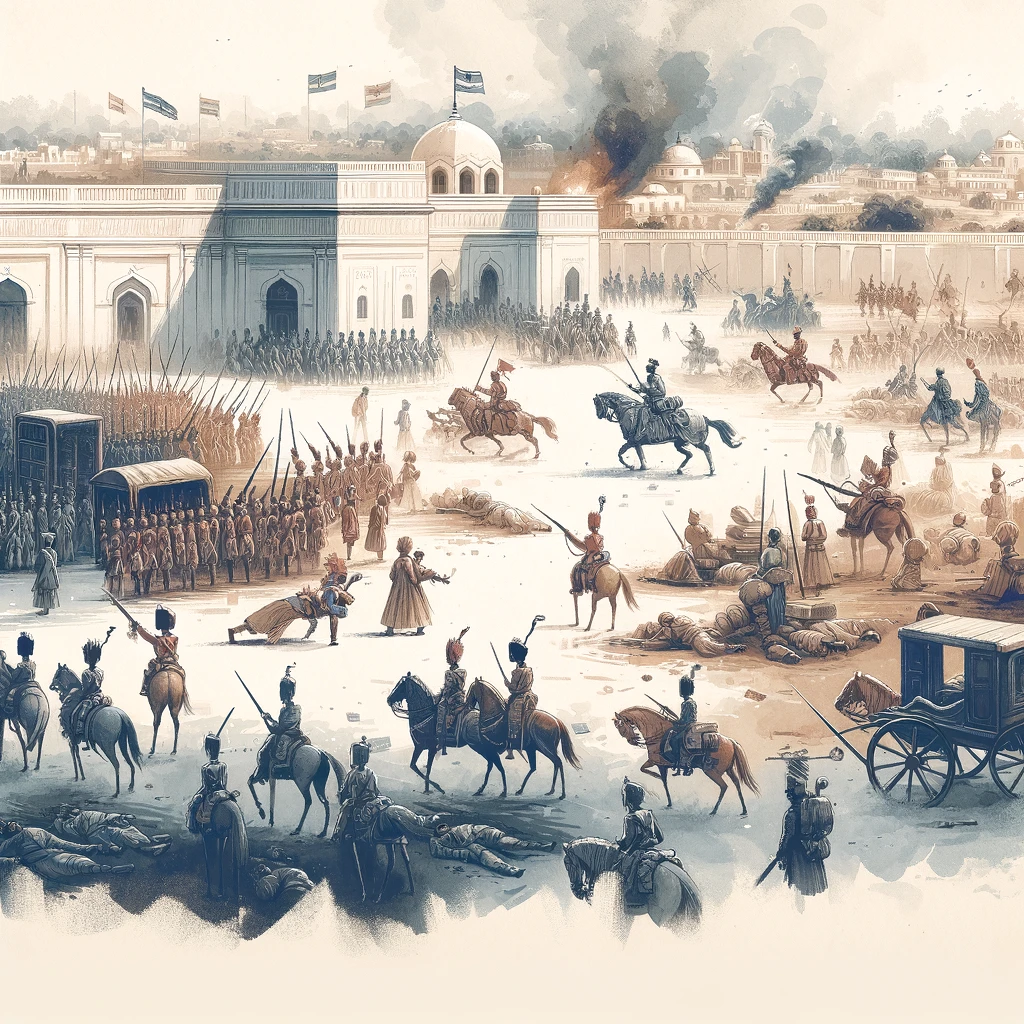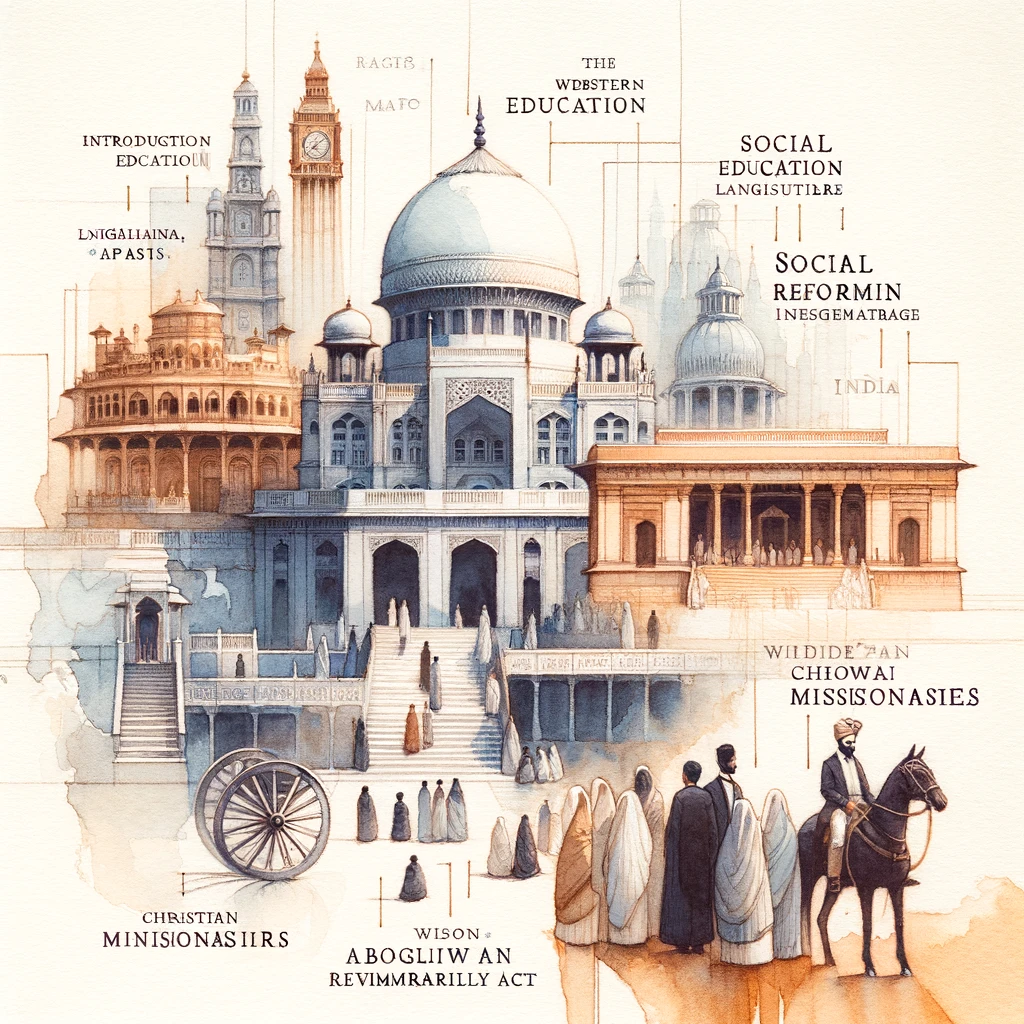The British colonial rule had a profound economic impact on India. This can be seen through several key aspects, including the deindustrialization of Indian handicrafts, the drain of wealth, and the various land revenue systems introduced by the British. These elements collectively contributed to the transformation and exploitation of the Indian economy.

Deindustrialization of Indian Handicrafts
One of the significant economic impacts of British rule was the systematic deindustrialization of India’s traditional handicrafts. Before British colonization, India was known for its diverse and skilled handicraft industries, which included textiles, metalwork, and other artisanal goods. However, with the advent of British rule, several policies and economic changes led to the decline of these industries.
Competition with British Goods
Indian handicrafts faced intense competition from British manufactured goods. The Industrial Revolution in Britain led to mass production, making British products cheaper and more abundant than Indian-made goods. The British policies favored the import of British goods into India while imposing heavy duties on Indian exports.
Export of Raw Materials
The British emphasized the export of raw materials from India to fuel their industries in Britain. Raw cotton, for instance, was exported to Britain, where it was processed into textiles and then sold back to India at a higher price. This shift from a producer of finished goods to a supplier of raw materials severely affected local artisans and craftsmen.
Destruction of Local Markets
The influx of British goods led to the destruction of local markets. Indian artisans could not compete with the price and quality of machine-made British products. This resulted in widespread unemployment among craftsmen and a decline in traditional industries.
Drain of Wealth Theory by Dadabhai Naoroji
The “Drain of Wealth” theory, proposed by Dadabhai Naoroji, was a crucial critique of the economic impact of British rule in India. Naoroji argued that the colonial government was systematically draining India’s wealth and resources, leading to impoverishment and economic stagnation.
1. Economic Exploitation: Naoroji highlighted that a significant portion of India’s wealth was being transferred to Britain through various means, including salaries of British officials, profits from British companies, and pensions. This outflow of wealth left little room for investment and development within India.
2. Unfair Trade Practices: The colonial trade policies were designed to benefit Britain at the expense of India. India was turned into a market for British goods while being deprived of its industrial base. The unequal trade balance further exacerbated the economic drain.
3. Impact on Indian Economy: The drain of wealth theory illustrated how the continuous outflow of resources weakened India’s economic foundation. It hindered capital formation, stifled industrial growth, and led to widespread poverty and underdevelopment.
British Land Revenue Systems: Zamindari, Ryotwari, and Mahalwari
The British introduced several land revenue systems in India, which had lasting impacts on the agrarian economy. These systems included the Zamindari, Ryotwari, and Mahalwari systems, each with its own unique features and implications.

Zamindari System
- Introduced in Bengal, Bihar, and parts of the North-Western Provinces.
- Under this system, landlords (Zamindars) were recognized as the owners of the land. They were responsible for collecting and paying the land revenue to the government.
- The Zamindars often exploited the peasants, leading to high rents and oppressive practices. This system created a class of absentee landlords and tenant farmers, leading to widespread poverty and rural indebtedness.
Ryotwari System
- Implemented in Madras, Bombay, and parts of Assam.
- Under the Ryotwari system, the government collected revenue directly from the individual cultivators (Ryots) based on the quality and extent of their land.
- This system aimed to eliminate middlemen but often resulted in high tax burdens on the peasants. The frequent reassessment of land and revenue demands led to instability and insecurity among farmers.
Mahalwari System
- Introduced in the North-Western Provinces, Central India, and Punjab.
- This system involved the assessment and collection of land revenue from a group of villages (Mahal) collectively.
- The responsibility of payment was placed on the village community or a representative. While it aimed to preserve traditional village structures, it also led to communal pressure and collective liabilities, which could be burdensome for the villagers.
Conclusion
The economic impact of British colonial rule in India was profound and multifaceted. The deindustrialization of Indian handicrafts, the drain of wealth, and the introduction of exploitative land revenue systems collectively undermined India’s economic structure. These changes not only disrupted traditional industries and agricultural practices but also laid the groundwork for long-term economic challenges that India faced even after gaining independence. Understanding these aspects is crucial for comprehending the historical context of India’s economic development and the legacy of colonialism.



